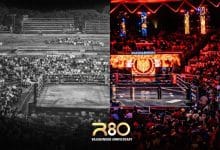Forensic analysis presents new image of Jesus, challenging centuries of traditional representation

The Popular Mechanics platform sparked controversy by unveiling the potentially most accurate representation of Jesus, challenging the conventional image embraced by the Christian population in the Western world.
Historically, Jesus has been depicted with long hair, a slim face, a beard, and a slender physique. Nevertheless, an examination of average skull patterns from Jewish individuals in Galilee, located in the northern region of Israel during that era, proposes a radically distinct image.
Forensic anthropologists used clues from the Bible, which suggests that long hair was considered shameful, leading them to believe that Jesus would have had short hair like other men of his time. As for his physique, if it matches the average for Jewish men of the period, Jesus would have stood at 5 feet 1 inch, or about 155 centimetres, and weighed approximately 110 pounds or about 50 kilogrammes.
While not 100% accurate, experts believe this prediction to be more precise than the image of Jesus familiar to us from the 12th century to the present day.



In related news, in Israel last year, a 2,000 year old cave believed to be the burial place of Salome, the apocryphal nurse to baby Jesus, revealed new evidence of its religious significance. Excavations exposed a traditional tomb associated with an important Jewish figure.
Artefacts uncovered suggest the site served as a Christian pilgrimage destination, with decorated oil lamps and inscriptions in various languages dating back to the 9th century. The Israel Antiquities Authority confirmed the cave’s historical ties to Judaism, but the revelation of its adaptation into a Christian chapel, dedicated to Salome, adds a new layer to its significance.
The restoration project aims to open the 350-square-meter space to the public, shedding light on the shared religious history within the cave located 35 kilometres southwest of Jerusalem.
Latest Thailand News
Follow The Thaiger on Google News:


























